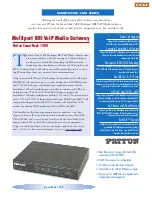
AWS Storage Gateway User Guide
Creating a Gateway
Backup Application
Medium Changer Type
Veeam Backup & Replication V9 Update 2 or
later
AWS-Gateway-VTL
Veritas Backup Exec 2014 or 15 or 16 or 20.x
AWS-Gateway-VTL
Veritas Backup Exec 2012
Note
Veritas has ended support for Backup
Exec 2012. For more information, see
End of Support for Prior Backup Exec
.
STK-L700
Veritas NetBackup Version 7.x or 8.x
AWS-Gateway-VTL
Important
We highly recommend that you choose the medium changer that's listed for your backup
application. Other medium changers might not function properly. You can choose a
different medium changer after the gateway is activated. For more information, see
Selecting a Medium Changer After Gateway Activation (p. 358)
.
•
Tape drive type
specifies the type of tape drive used by this gateway.
2. Choose
Activate gateway
.
When the gateway is successfully activated, the AWS Storage Gateway console displays the
Configure local storage
page.
If activation is not successful, see
Troubleshooting Your Gateway (p. 316)
Configuring Local Disks
When you deployed the VM, you allocated local disks for your gateway. Now you configure your gateway
to use these disks.
Note
If you allocate local disks on a VMware host, make sure to configure the disks to use
paravirtualized disk controllers.
When adding a cache or upload buffer to an existing gateway, make sure to create new disks
in your host (hypervisor or Amazon EC2 instance). Don't change the size of existing disks if the
disks have been previously allocated as either a cache or upload buffer.
To configure local disks
1. On the
Configure local disks
page, identify the disks you allocated and decide which ones you
want to use for an upload buffer and cached storage. For information about disk size limits, see
Recommended Local Disk Sizes For Your Gateway (p. 397)
API Version 2013-06-30
81
















































